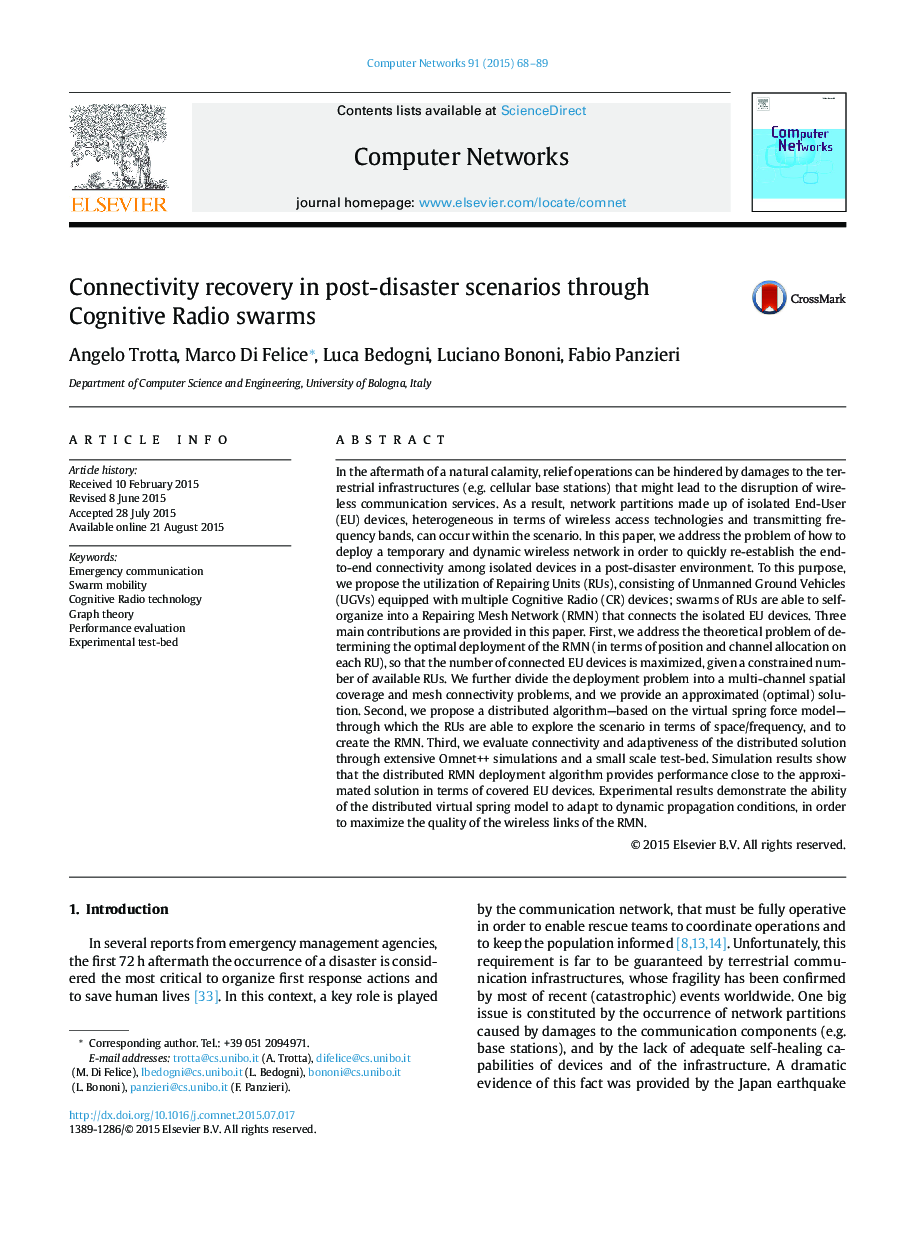| Article ID | Journal | Published Year | Pages | File Type |
|---|---|---|---|---|
| 450692 | Computer Networks | 2015 | 22 Pages |
In the aftermath of a natural calamity, relief operations can be hindered by damages to the terrestrial infrastructures (e.g. cellular base stations) that might lead to the disruption of wireless communication services. As a result, network partitions made up of isolated End-User (EU) devices, heterogeneous in terms of wireless access technologies and transmitting frequency bands, can occur within the scenario. In this paper, we address the problem of how to deploy a temporary and dynamic wireless network in order to quickly re-establish the end-to-end connectivity among isolated devices in a post-disaster environment. To this purpose, we propose the utilization of Repairing Units (RUs), consisting of Unmanned Ground Vehicles (UGVs) equipped with multiple Cognitive Radio (CR) devices; swarms of RUs are able to self-organize into a Repairing Mesh Network (RMN) that connects the isolated EU devices. Three main contributions are provided in this paper. First, we address the theoretical problem of determining the optimal deployment of the RMN (in terms of position and channel allocation on each RU), so that the number of connected EU devices is maximized, given a constrained number of available RUs. We further divide the deployment problem into a multi-channel spatial coverage and mesh connectivity problems, and we provide an approximated (optimal) solution. Second, we propose a distributed algorithm—based on the virtual spring force model—through which the RUs are able to explore the scenario in terms of space/frequency, and to create the RMN. Third, we evaluate connectivity and adaptiveness of the distributed solution through extensive Omnet++ simulations and a small scale test-bed. Simulation results show that the distributed RMN deployment algorithm provides performance close to the approximated solution in terms of covered EU devices. Experimental results demonstrate the ability of the distributed virtual spring model to adapt to dynamic propagation conditions, in order to maximize the quality of the wireless links of the RMN.
